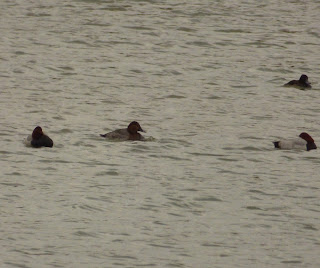Male Bearded Tit
Reed Bunting
Male Bearded Tit
A welcome sign after a number of road closures
Common Buzzard on way home
Unfortunately the weather was too windy however as I waited for the star performers a Bittern took flight over our heads, always a great sight. Despite hearing a number of Bearded Tits they were just teasing us until a single male came into view on the boardwalk. Up to 24 have been seen together in this location however I can to settle for just three sightings in total all very brief. I managed to snap a Reed Bunting that was taking advantage of the seed, thankfully Brian Thompson kindly forwarded a couple of amazing images for use on the blog.





















































